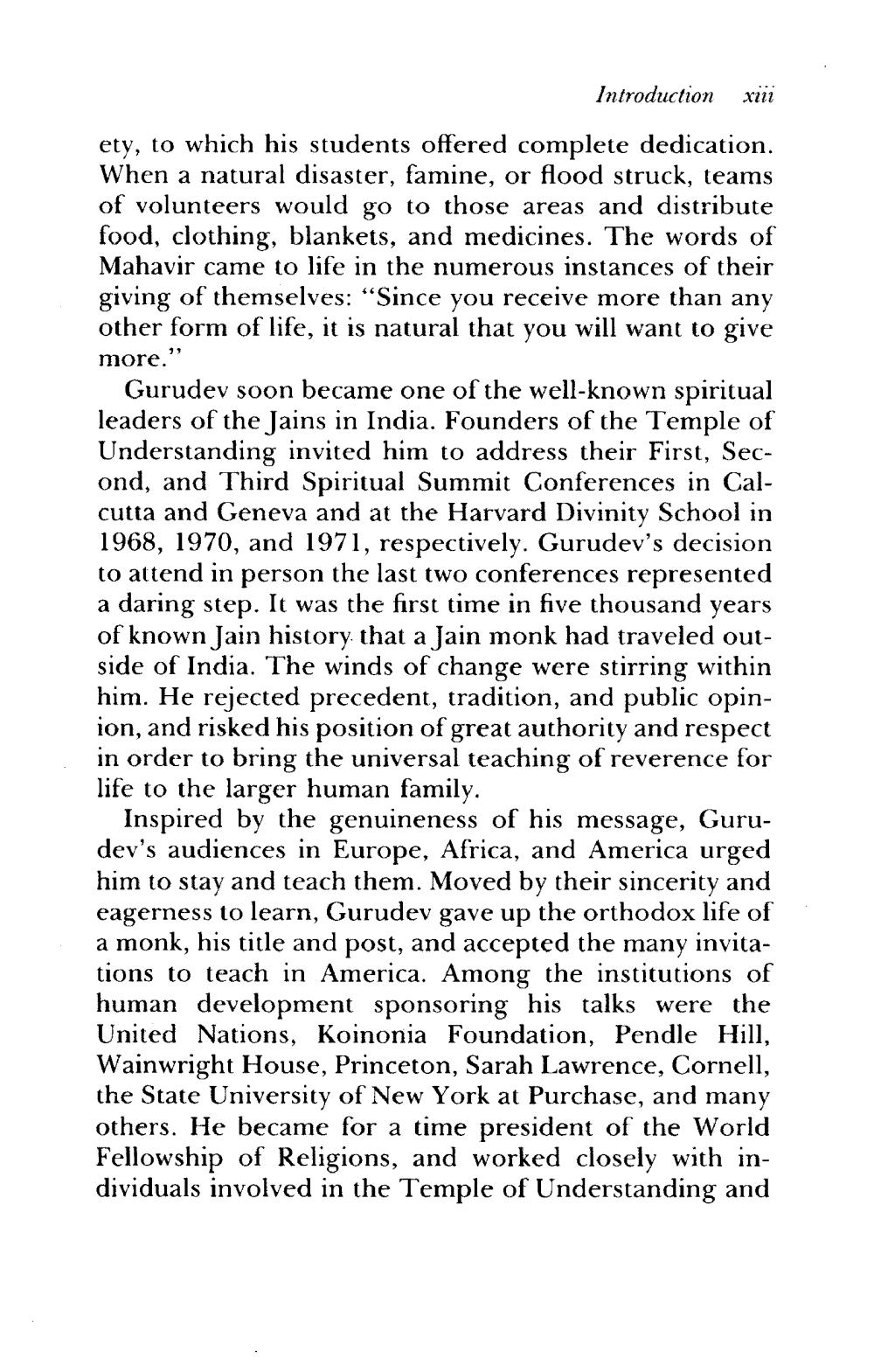________________
Introduction
xiii
ety, to which his students offered complete dedication. When a natural disaster, famine, or flood struck, teams of volunteers would go to those areas and distribute food, clothing, blankets, and medicines. The words of Mahavir came to life in the numerous instances of their giving of themselves: “Since you receive more than any other form of life, it is natural that you will want to give more."
Gurudev soon became one of the well-known spiritual leaders of the Jains in India. Founders of the Temple of Understanding invited him to address their First, Second, and Third Spiritual Summit Conferences in Calcutta and Geneva and at the Harvard Divinity School in 1968, 1970, and 1971, respectively. Gurudev's decision to attend in person the last two conferences represented a daring step. It was the first time in five thousand years of known Jain history that a Jain monk had traveled outside of India. The winds of change were stirring within him. He rejected precedent, tradition, and public opinion, and risked his position of great authority and respect in order to bring the universal teaching of reverence for life to the larger human family
Inspired by the genuineness of his message, Gurudev's audiences in Europe, Africa, and America urged him to stay and teach them. Moved by their sincerity and eagerness to learn, Gurudev gave up the orthodox life of a monk, his title and post, and accepted the many invitations to teach in America. Among the institutions of human development sponsoring his talks were the United Nations, Koinonia Foundation, Pendle Hill, Wainwright House, Princeton, Sarah Lawrence, Cornell, the State University of New York at Purchase, and many others. He became for a time president of the World Fellowship of Religions, and worked closely with individuals involved in the Temple of Understanding and




